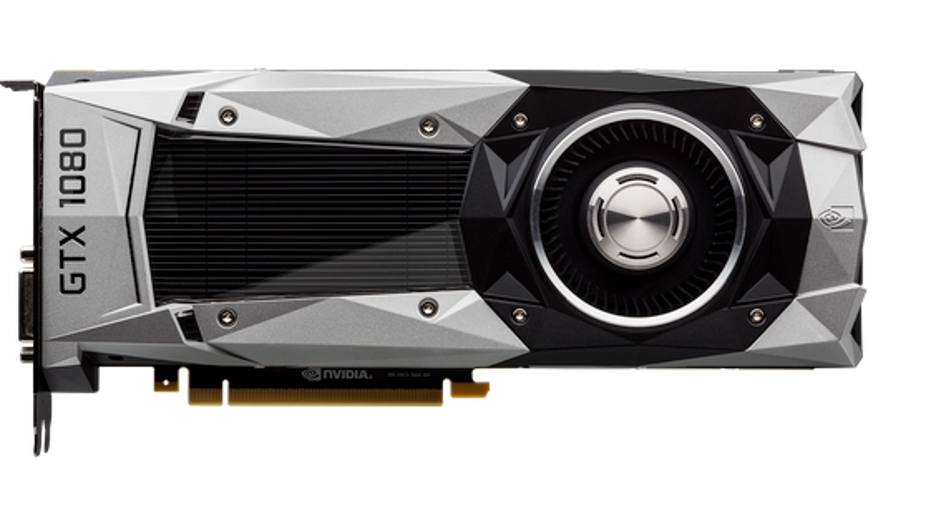What NVIDIA's Blowout Quarter Says About AMD's Comeback

Image source: NVIDIA.
Polaris was supposed to be a big deal forAdvanced Micro Devices (NASDAQ: AMD). The RX 480, launched in late June, and the RX 470 and RX 460, launched in August, went after the mainstream portion of the graphics card market aggressively. After losing substantial market share to NVIDIA (NASDAQ: NVDA) over the past few years and watching its graphics and computing segment plunge into the red, AMD bet on Polaris to begin its comeback.
The situation did improve for AMD during the third quarter. The computing and graphics segment, which includes graphics cards as well as PC CPUs, posted year-over-year revenue growth of about 11%, driven by higher GPU sales. The segment was still unprofitable, but less so compared to the prior-year period.
Not good enough
Unfortunately for AMD, this progress has been completely overshadowed by NVIDIA's blowout third quarter. Revenue grew 54% year over year, with gaming revenue surging 63%. Pascal-based graphics cards, including the GTX 1080, GTX 1070, and GTX 1060, led the way to a record quarter for NVIDIA.
It's important to put the numbers in perspective. NVIDIA's gaming segment, which doesn't include GPUs used for professional or data center applications, generated $1.24 billion of revenue during the third quarter. AMD's computing and graphics segment, which includes gaming GPUs, professional GPUs, and PC processors, produced just $472 million of revenue. The change in NVIDIA's gaming revenue compared to the prior-year period -- $483 million -- was greater than the revenue produced by AMD's core business.
Even before NVIDIA reported its results, there were some bad signs for AMD. The company cut prices on its two lower-end Polaris graphics cards following NVIDIA's announcement of the GTX 1050 and GTX 1050 Ti in October. Those cards, priced at $109 and $139, went directly after the RX 460 and RX 470 from AMD, effectively ending AMD's time as the leader in the mainstream portion of the market.
Another data point that suggests that Polaris is falling short comes from Steam, the dominant PC gaming platform. According to Steam's survey data, the RX 480 was owned by just 0.28% of Steam users in October, making it less than one-fourth as popular as NVIDIA's GTX 1070, which is substantially more expensive. None of AMD's other Polaris-based graphics cards registered on the survey at all.
Polaris represents just one part of AMD's turnaround strategy. In 2017, the company plans to launch high-end Vega graphics cards aimed at competing with NVIDIA's high-end offerings, as well as new Zen CPUs. Vega is expected to offer gamers an alternative to NVIDIA's high-end Pascal graphics cards, while Zen promises major performance gains that could drive share gains in the PC and server CPU markets.
If Polaris is any indication, though, investors may want to dial back their expectations. AMD's mainstream graphics strategy sounded great on paper, but execution has been disappointing. NVIDIA's gaming business is accelerating, despite the much-hyped launch of Polaris.
One major contributing factor to AMD's troubles is the company's shrinking research and development (R&D) budget. Just $947 million went toward R&D in 2015, down from $1.2 billion in 2013. Slashing R&D spending has helped bring the company closer to profitability, but expecting AMD to be able to close its technological gap with NVIDIA while spending far less on R&D may be unrealistic. For comparison, NVIDIA spent $1.33 billion on R&D in 2015, despite its narrower focus on graphics.
AMD's task only becomes more difficult going forward, with the GTX 1050 and GTX 1050 Ti now widely available. If Polaris-based graphics cards could only drive middling growth while facing little direct competition, it's hard to imagine growth accelerating now that NVIDIA has a strong mainstream presence.
Forget the 2016 Election and find out why Nvidia is one of the 10 best stocks to buy nowDonald Trump is the new president, and you're naturally wondering how best to protect your portfolio and profit in the process. Well, Motley Fool co-founders Tom and David Gardner have spent more than a decade beating the market. (In fact, the newsletter they run, Motley Fool Stock Advisor, has nearly tripled the market!*)
With their record of winning in up and down markets, David and Tom know how to invest profitably no matter who occupies the White House.
Tom and David just revealed their ten top stock picks for investors to buy right now. Nvidia is on the list-but there are nine others you may be overlooking.
Click here to get access to the full list!
*Stock Advisor returns as of November 7, 2016.
Timothy Green has no position in any stocks mentioned. The Motley Fool owns shares of and recommends NVIDIA. Try any of our Foolish newsletter services free for 30 days. We Fools may not all hold the same opinions, but we all believe that considering a diverse range of insights makes us better investors. The Motley Fool has a disclosure policy.



















